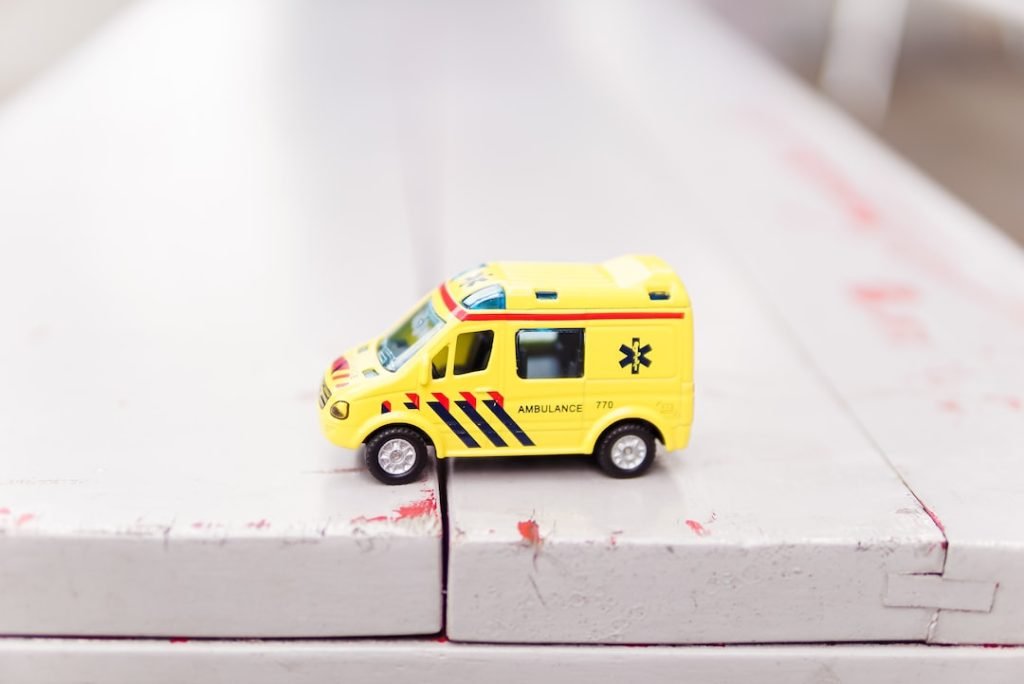

Norwegian Vocabulary for Health and Medical Situations
Learning medical vocabulary in a foreign language is crucial for individuals who are living or planning to live in a foreign country. It allows them to effectively communicate with healthcare professionals, understand medical instructions, and navigate the healthcare system. In Norway, learning medical vocabulary in Norwegian is particularly important due to the unique characteristics of the language.
Norwegian is a North Germanic language that is spoken by approximately 5 million people. It is the official language of Norway and has two written forms: Bokmål and Nynorsk. Bokmål is the most widely used form and is based on Danish, while Nynorsk is based on Norwegian dialects. Norwegian has a complex grammar system with three genders (masculine, feminine, and neuter) and four cases (nominative, genitive, dative, and accusative). It also has a large number of dialects, which can vary significantly in pronunciation and vocabulary.
Table of Contents
ToggleKey Takeaways
- Norwegian medical vocabulary can be challenging for non-native speakers.
- Common symptoms and medical terms in Norwegian include feber (fever), hodepine (headache), and hoste (cough).
- Understanding Norwegian health insurance and medical system is important for accessing healthcare in Norway.
- Vocabulary for visiting a doctor or hospital in Norway includes lege (doctor), sykehus (hospital), and resept (prescription).
- Emergency medical vocabulary in Norwegian includes nødsituasjon (emergency situation) and ambulanse (ambulance).
- Communicating with Norwegian healthcare professionals requires clear and concise language.
- Vocabulary for medications and prescriptions in Norwegian includes medisin (medicine) and apotek (pharmacy).
- Norwegian vocabulary for mental health and counselling includes terapi (therapy) and psykolog (psychologist).
- Medical vocabulary for pregnancy and childbirth in Norway includes fødsel (birth) and jordmor (midwife).
- Norwegian vocabulary for health and wellness activities includes trening (exercise) and kosthold (diet).
Common Symptoms and Medical Terms in Norwegian
To effectively communicate with healthcare professionals in Norway, it is important to learn common symptoms and medical terms in Norwegian. Here are some examples:
– Fever: feber
– Headache: hodepine
– Cough: hoste
– Sore throat: sår hals
– Stomachache: magesmerter
– Nausea: kvalme
– Vomiting: oppkast
– Diarrhea: diaré
– Allergy: allergi
– Rash: utslett
When using these terms in context, you can say:
– Jeg har feber. (I have a fever.)
– Jeg har vondt i hodet. (I have a headache.)
– Jeg hoster mye. (I am coughing a lot.)
– Jeg har vondt i halsen. (I have a sore throat.)
– Jeg har magesmerter. (I have stomachache.)
– Jeg føler meg kvalm. (I feel nauseous.)
– Jeg har kastet opp. (I have vomited.)
– Jeg har diaré. (I have diarrhea.)
– Jeg har allergi mot pollen. (I am allergic to pollen.)
– Jeg har fått et utslett. (I have developed a rash.)
Understanding Norwegian Health Insurance and Medical System
To access medical care in Norway, it is important to understand the Norwegian health insurance system. In Norway, healthcare is primarily funded through taxes and is provided by the government. All residents are required to have a valid Norwegian National Insurance Scheme (Folketrygden) card, which provides access to healthcare services.
To access medical care, you can visit a general practitioner (fastlege) who acts as a gatekeeper to specialized care. You can choose your own general practitioner, and they will be your primary point of contact for non-emergency medical issues. In case of emergencies, you can go directly to the emergency department of a hospital.
Vocabulary for Visiting a Doctor or Hospital in Norway
| Term | Definition |
|---|---|
| Doctor | A medical professional who diagnoses and treats illnesses and injuries |
| Hospital | A medical facility where patients receive treatment and care for illnesses and injuries |
| Appointment | A scheduled time to see a doctor or healthcare provider |
| Prescription | A written order from a doctor for medication or treatment |
| Insurance | A contract between a patient and an insurance company that provides financial protection for medical expenses |
| Emergency | A serious or life-threatening medical situation that requires immediate attention |
| Symptom | A physical or mental indication of an illness or injury |
| Diagnosis | The identification of an illness or injury based on symptoms and medical tests |
| Treatment | The medical care and procedures used to manage or cure an illness or injury |
| Referral | A recommendation from a doctor to see a specialist or receive additional medical care |
When visiting a doctor or hospital in Norway, it is important to know the relevant vocabulary words and phrases. Here are some examples:
– Appointment: timeavtale
– Patient: pasient
– Doctor: lege
– Nurse: sykepleier
– Hospital: sykehus
– Waiting room: venterom
– Examination: undersøkelse
– Prescription: resept
– X-ray: røntgen
– Blood test: blodprøve
When using these terms in context, you can say:
– Jeg trenger en timeavtale hos legen. (I need an appointment with the doctor.)
– Jeg er pasient hos Dr. Hansen. (I am a patient of Dr. Hansen.)
– Kan jeg snakke med en sykepleier? (Can I speak to a nurse?)
– Jeg må dra til sykehuset for en undersøkelse. (I need to go to the hospital for an examination.)
– Jeg trenger en resept på medisinen min. (I need a prescription for my medication.)
– Jeg må ta en røntgenundersøkelse. (I need to have an X-ray.)
– Jeg må ta en blodprøve. (I need to have a blood test.)
Emergency Medical Vocabulary in Norwegian
In case of emergencies, it is important to know emergency medical vocabulary in Norwegian. Here are some examples:
– Emergency: nødsituasjon
– Ambulance: ambulanse
– Police: politi
– Fire: brann
– Help: hjelp
– Pain: smerte
– Accident: ulykke
– Heart attack: hjerteinfarkt
– Stroke: hjerneslag
– Breathing difficulties: pustevansker
When using these terms in context, you can say:
– Det er en nødsituasjon! Ring ambulansen! (It’s an emergency! Call an ambulance!)
– Jeg trenger hjelp! (I need help!)
– Det er en brann! Ring politiet! (There’s a fire! Call the police!)
– Jeg har vondt! (I am in pain!)
– Det har vært en ulykke! (There has been an accident!)
– Han har fått et hjerteinfarkt! (He has had a heart attack!)
– Hun har fått et hjerneslag! (She has had a stroke!)
– Han har pustevansker! (He is having breathing difficulties!)
Communicating with Norwegian Healthcare Professionals

To effectively communicate with Norwegian healthcare professionals, it is important to be polite and clear in your communication. Here are some tips for communicating effectively:
– Use formal language: In Norway, it is common to use formal language when speaking to healthcare professionals. Address them as “Doktor” or “Lege” followed by their last name.
– Be clear and concise: When describing your symptoms or medical history, be clear and concise. Use simple language and avoid jargon.
– Ask questions: If you don’t understand something, don’t hesitate to ask questions. Healthcare professionals are there to help you and will be happy to clarify any doubts you may have.
– Take notes: It can be helpful to take notes during your appointment to remember important information or instructions.
Here are some common phrases and questions you can use when communicating with Norwegian healthcare professionals:
– Jeg har en avtale med Doktor Hansen. (I have an appointment with Dr. Hansen.)
– Jeg har noen spørsmål angående min diagnose. (I have some questions regarding my diagnosis.)
– Kan du forklare behandlingsalternativene for meg? (Can you explain the treatment options to me?)
– Hva er bivirkningene av denne medisinen? (What are the side effects of this medication?)
– Kan du gi meg en resept på denne medisinen? (Can you give me a prescription for this medication?)
– Hvor lang tid tar det å bli frisk? (How long does it take to recover?)
– Hva skal jeg gjøre hvis symptomene mine forverres? (What should I do if my symptoms worsen?)
Vocabulary for Medications and Prescriptions in Norwegian
When it comes to medications and prescriptions, it is important to know the relevant vocabulary words and phrases in Norwegian. Here are some examples:
– Medication: medisin
– Prescription: resept
– Pill: pille
– Tablet: tablett
– Capsule: kapsel
– Dosage: dosering
– Side effects: bivirkninger
– Over-the-counter: reseptfri
– Pharmacist: apoteker
– Pharmacy: apotek
When using these terms in context, you can say:
– Jeg trenger medisinen min. (I need my medication.)
– Jeg har fått en resept fra legen. (I have received a prescription from the doctor.)
– Jeg tar en pille hver dag. (I take a pill every day.)
– Jeg tar en tablett tre ganger om dagen. (I take a tablet three times a day.)
– Jeg tar en kapsel om kvelden. (I take a capsule in the evening.)
– Doseringen er to ganger om dagen. (The dosage is two times a day.)
– Jeg opplever noen bivirkninger av medisinen. (I am experiencing some side effects from the medication.)
– Kan jeg kjøpe denne medisinen reseptfri? (Can I buy this medication over-the-counter?)
– Jeg må gå til apoteket for å hente medisinen min. (I need to go to the pharmacy to pick up my medication.)
Norwegian Vocabulary for Mental Health and Counselling
When it comes to mental health and counselling, it is important to know the relevant vocabulary words and phrases in Norwegian. Here are some examples:
– Mental health: psykisk helse
– Counselling: rådgivning
– Therapist: terapeut
– Psychologist: psykolog
– Psychiatrist: psykiater
– Depression: depresjon
– Anxiety: angst
– Stress: stress
– Therapy: terapi
– Support group: støttegruppe
When using these terms in context, you can say:
– Jeg trenger hjelp med min psykiske helse. (I need help with my mental health.)
– Jeg ønsker å få rådgivning. (I would like to receive counselling.)
– Jeg har en avtale med min terapeut. (I have an appointment with my therapist.)
– Jeg trenger å snakke med en psykolog. (I need to talk to a psychologist.)
– Jeg har en avtale med min psykiater. (I have an appointment with my psychiatrist.)
– Jeg sliter med depresjon. (I am struggling with depression.)
– Jeg har angstproblemer. (I have anxiety issues.)
– Jeg føler meg veldig stresset. (I am feeling very stressed.)
– Jeg går til terapi hver uke. (I go to therapy every week.)
– Jeg er med i en støttegruppe. (I am part of a support group.)
Medical Vocabulary for Pregnancy and Childbirth in Norway
For individuals who are pregnant or planning to have a child in Norway, it is important to know the relevant medical vocabulary words and phrases. Here are some examples:
– Pregnancy: graviditet
– Obstetrician: jordmor
– Midwife: fødselshjelper
– Ultrasound: ultralyd
– Contractions: rier
– Labor: fødsel
– Delivery: fødsel
– C-section: keisersnitt
– Postpartum: barseltid
– Breastfeeding: amming
When using these terms in context, you can say:
– Jeg er i min tredje måned av graviditeten. (I am in my third month of pregnancy.)
– Jeg har en avtale med min jordmor. (I have an appointment with my obstetrician.)
– Jeg ønsker å ha en fødselshjelper til stede under fødselen. (I would like to have a midwife present during the birth.)
– Jeg skal ha en ultralyd i morgen. (I am going to have an ultrasound tomorrow.)
– Jeg har rier. (I am having contractions.)
– Jeg er i fødsel. (I am in labor.)
– Jeg skal ha en naturlig fødsel. (I am going to have a natural delivery.)
– Jeg må ha et keisersnitt. (I need to have a C-section.)
– Jeg er i barseltiden. (I am in the postpartum period.)
– Jeg ammer babyen min. (I am breastfeeding my baby.)
Norwegian Vocabulary for Health and Wellness Activities
To maintain a healthy lifestyle, it is important to know the relevant vocabulary words and phrases for health and wellness activities in Norwegian. Here are some examples:
– Exercise: trening
– Yoga: yoga
– Meditation: meditasjon
– Healthy eating: sunn mat
– Balanced diet: balansert kosthold
– Sleep: søvn
– Relaxation: avslapning
– Stress management: stressmestring
– Wellness: velvære
– Self-care: egenomsorg
When using these terms in context, you can say:
– Jeg liker å trene regelmessig. (I like to exercise regularly.)
– Jeg praktiserer yoga for å slappe av. (I practice yoga to relax.)
– Jeg bruker meditasjon for å redusere stress. (I use meditation to reduce stress.)
– Jeg prøver å spise sunn mat hver dag. (I try to eat healthy food every day.)
– Jeg har et balansert kosthold. (I have a balanced diet.)
– Jeg får nok søvn hver natt. (I get enough sleep every night.)
– Jeg liker å slappe av og ta det med ro. (I like to relax and take it easy.)
– Jeg jobber med stressmestring. (I am working on stress management.)
– Jeg fokuserer på mitt velvære. (I focus on my wellness.)
– Jeg tar vare på meg selv gjennom egenomsorg. (I take care of myself through self-care.)
Learning medical vocabulary in Norwegian is crucial for individuals living or planning to live in Norway. It allows them to effectively communicate with healthcare professionals, understand medical instructions, and navigate the healthcare system. By familiarizing themselves with common symptoms and medical terms, understanding the Norwegian health insurance system, and learning vocabulary for visiting a doctor or hospital, emergency situations, communicating with healthcare professionals, medications and prescriptions, mental health and counselling, pregnancy and childbirth, and health and wellness activities, individuals can confidently navigate the Norwegian healthcare system and ensure their well-being. It is important to continue practicing and learning the language to improve communication and access quality healthcare in Norway.
If you want to learn Norwegian, you can register for classes here. We look forward to hearing from you and helping you become fluent in Norwegian!
Refer a friend and get $150. Join the program here
If you want to learn Norwegian, you can register for classes here. We look forward to hearing from you and helping you become fluent in Norwegian.





